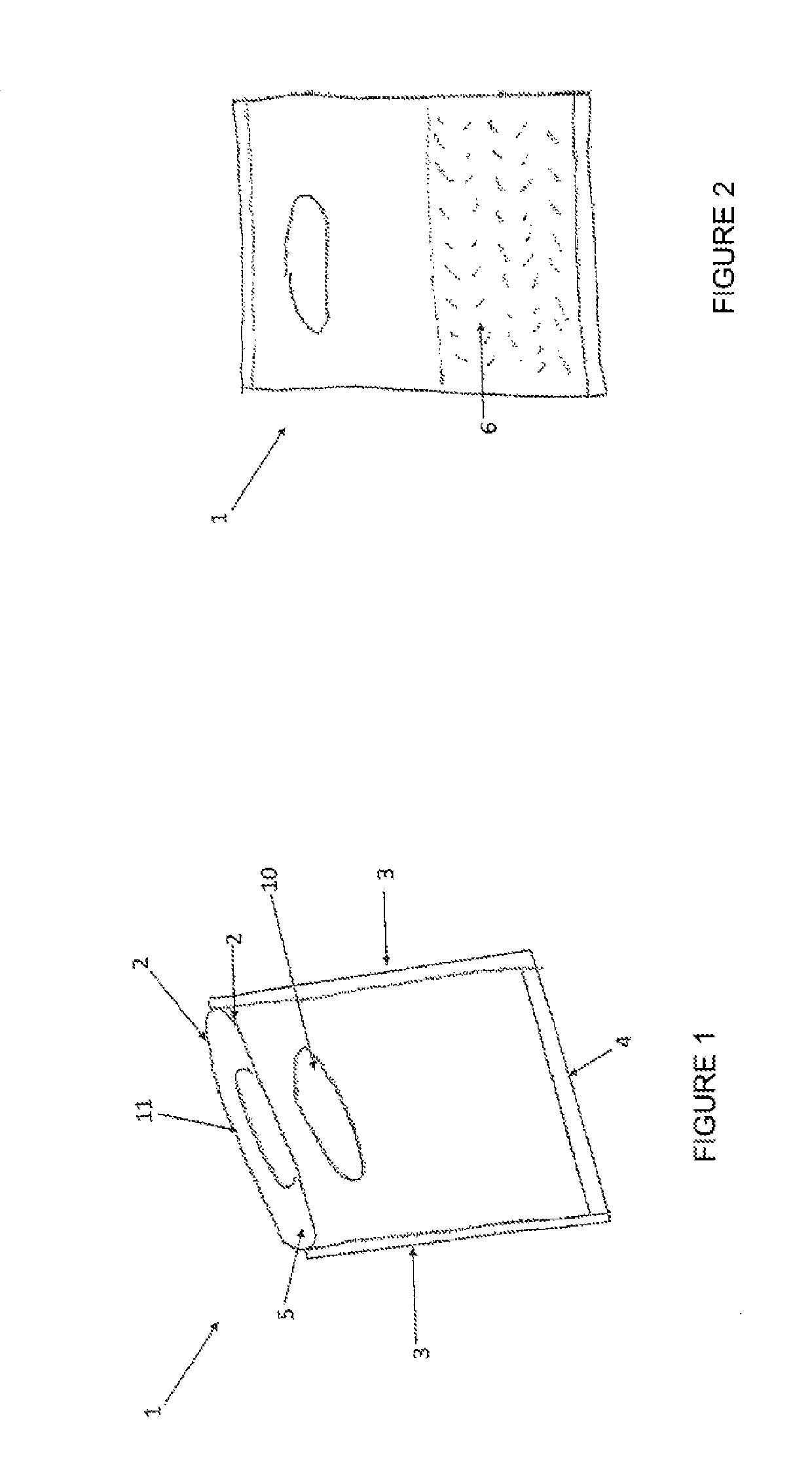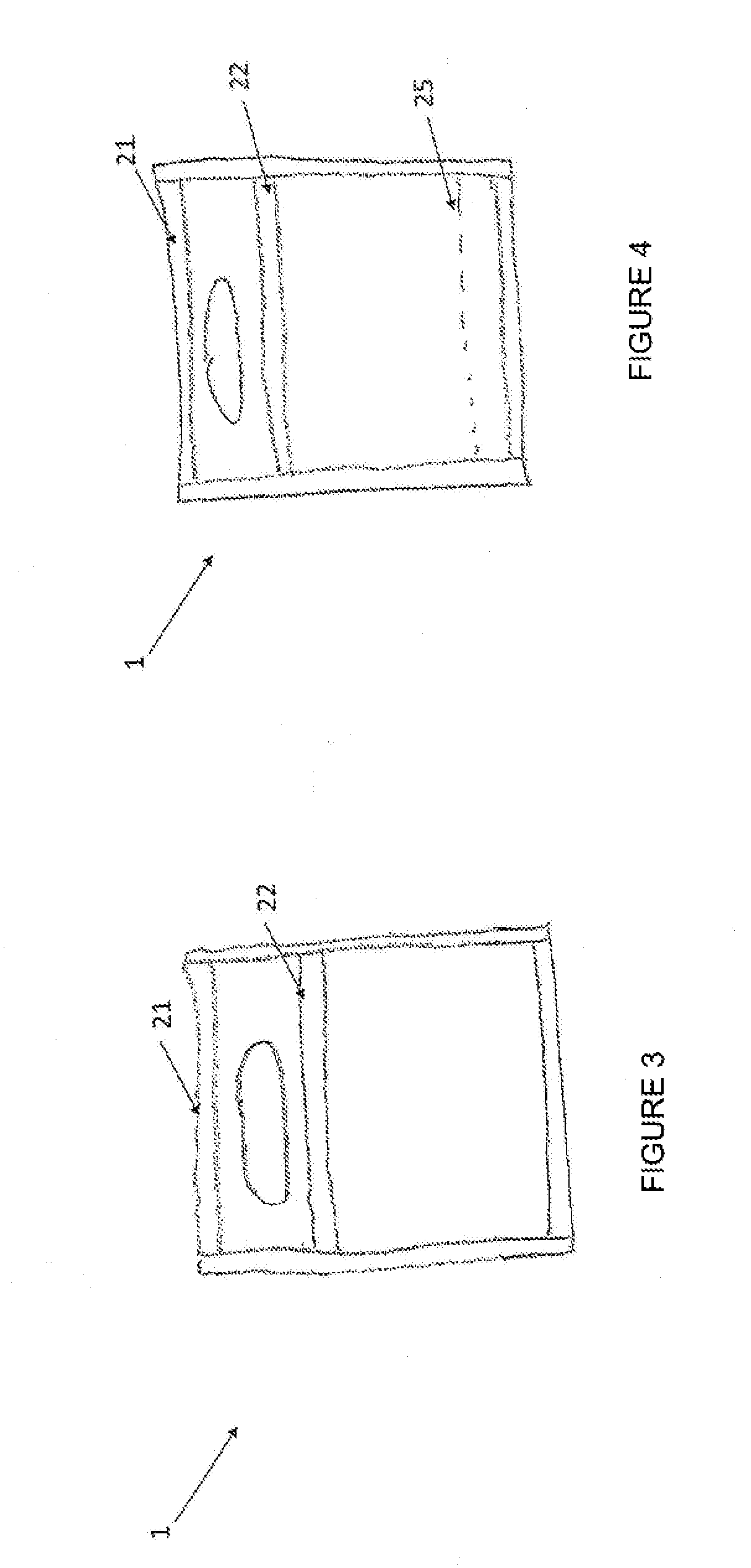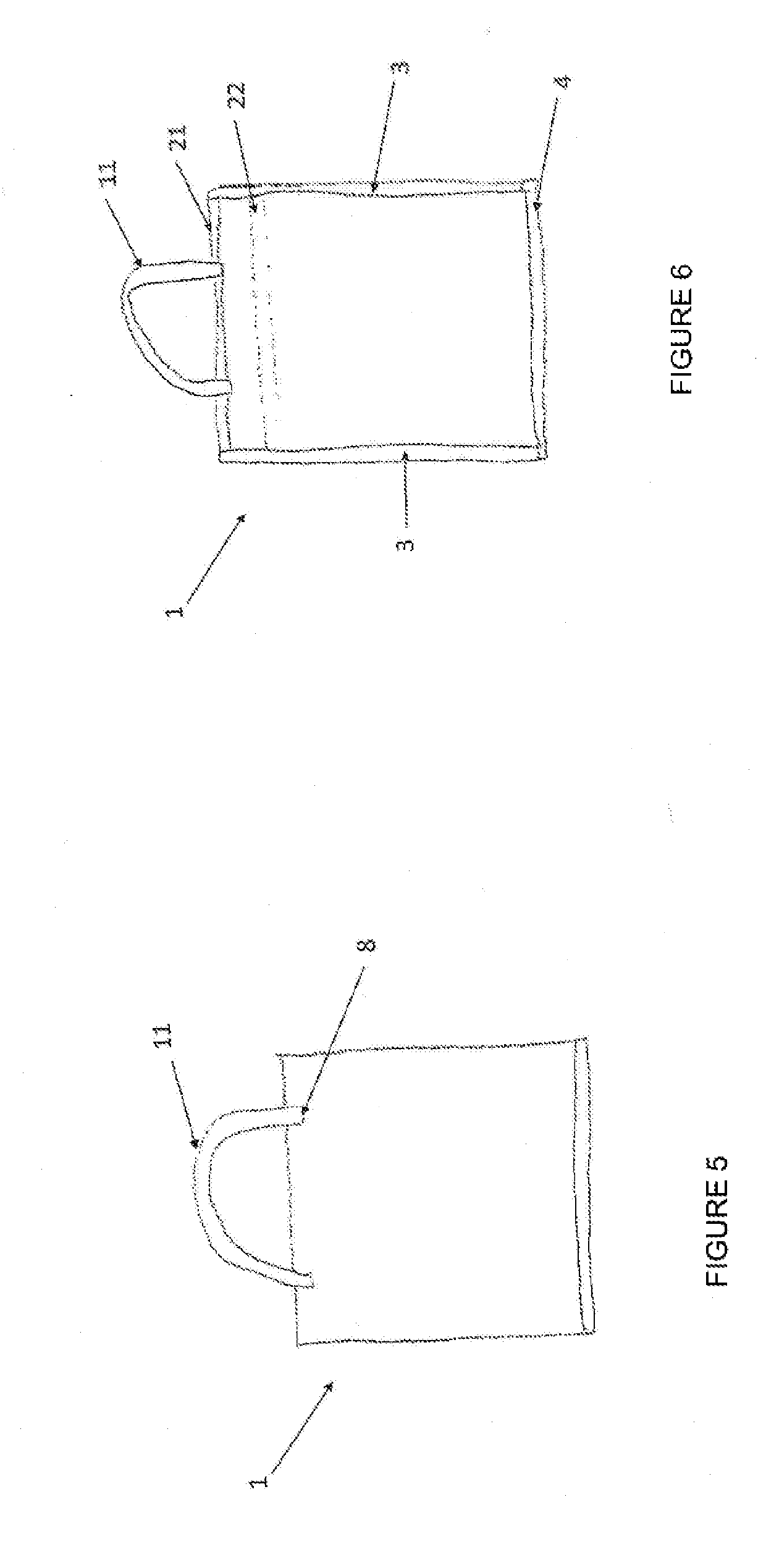Water-degradable bag
a bag and water-degradable technology, applied in the field of water-degradable bags, can solve the problems of large accumulation of waste that will never degrade, damage to wildlife, and years to degrad
- Summary
- Abstract
- Description
- Claims
- Application Information
AI Technical Summary
Benefits of technology
Problems solved by technology
Method used
Image
Examples
first embodiment
[0016]In a first embodiment, this invention refers to a bag for carrying goods purchased from retailers or wholesalers, and / or packing consumer goods or hygienic products, which is water-degradable in water at room temperature or hot water.
[0017]The bag is manufactured based on a melt-extruded fabric, such as a nonwoven fabric, and more specifically, the bag is made of a nonwoven, meltblown fabric comprising a polyvinyl alcohol resin that can dissolve in water at room temperature or hot water.
[0018]The polyvinyl alcohol is traditionally made by polymerization of vinyl acetate and subsequent hydrolyzation of the polymer into an alcohol. Polyvinylic alcohols vary in their polymerization degree and hydrolysis degree. The temperature at which polyvinylic alcohol dissolves can be varied by altering the orientation of the polymer, changing its hydrolysis degree, and its crystallization.
[0019]A nonwoven meltblown fabric is obtained in the same way as an nonwoven adhesive-bonded spunbond fa...
second embodiment
[0026]In the bag disclosed herein, said bag can include a direct insertion of advertisement or information, either on the sheet itself or on the sealing bands, using a water-based flexographic printing so that when the bag is dissolved in water, no residues of contaminating paints remain in the dilution water.
third embodiment
[0027]In the bag disclosed herein, said bag can be of different colors other than the basic color (white) so it is presented in a wide, appealing range of colors that make it attractive to the user. Said coloring is achieved incorporating the appropriate colorant to the basic mix, which can dissolve in water and does not leave any contaminating residues in the dissolution. Thus, the bag can be of different colors, such as: green, yellow, light blue and red, in their multiple shades.
PUM
| Property | Measurement | Unit |
|---|---|---|
| Length | aaaaa | aaaaa |
| Length | aaaaa | aaaaa |
| Length | aaaaa | aaaaa |
Abstract
Description
Claims
Application Information
 Login to View More
Login to View More - R&D
- Intellectual Property
- Life Sciences
- Materials
- Tech Scout
- Unparalleled Data Quality
- Higher Quality Content
- 60% Fewer Hallucinations
Browse by: Latest US Patents, China's latest patents, Technical Efficacy Thesaurus, Application Domain, Technology Topic, Popular Technical Reports.
© 2025 PatSnap. All rights reserved.Legal|Privacy policy|Modern Slavery Act Transparency Statement|Sitemap|About US| Contact US: help@patsnap.com



